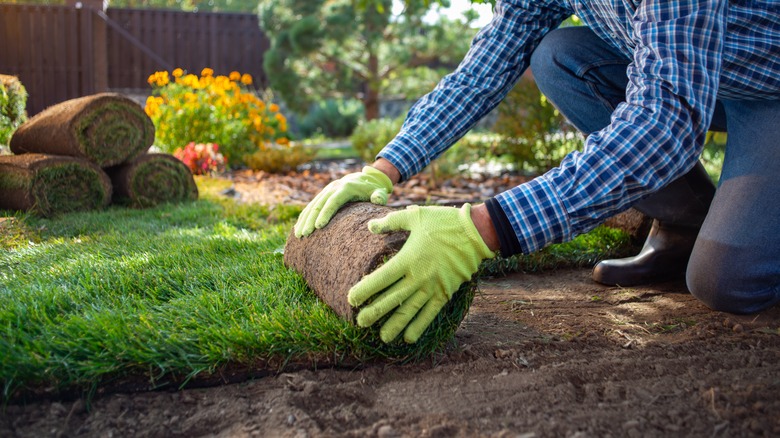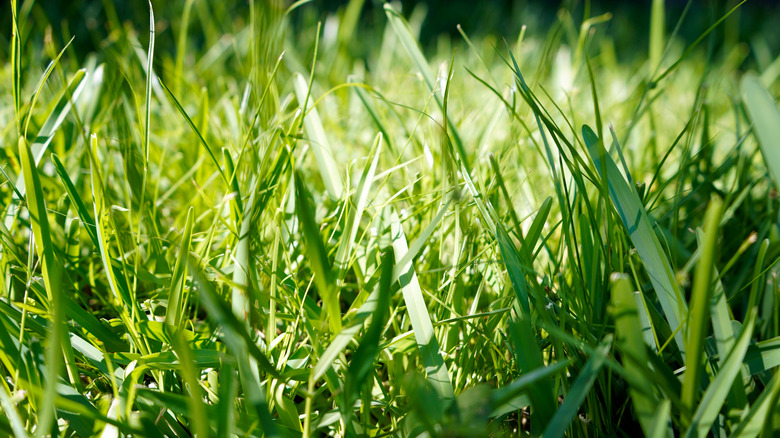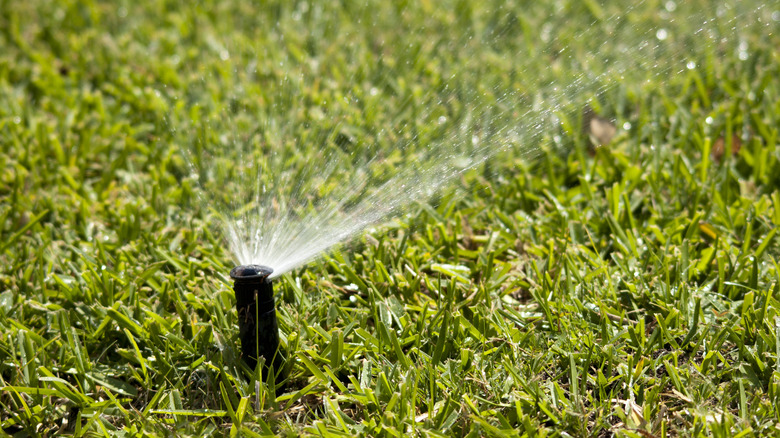The Difference Between Floratam And St. Augustine Grass Explained
Turf grass has evolved into a popular feature across residential and commercial properties all over the country, especially within communities lacking the environmental assets needed to sustain traditional grass breeds. Florida is home to many quintessential examples of these communities, with the state's high temperatures, humid and tropical climate, and general shortage of rainfall. One of the most popular types of turf grass spotted around the state is St. Augustine grass, a thick, low-maintenance grass capable of handling extreme heat while requiring little precipitation to grow and thrive. But St. Augustine is more than a standalone breed of artificial grass; it actually describes a group of turf grasses referred to as cultivars, all of which give residents of less temperate climates the chance to maintain lawns of their own. Despite being classified as a specific type of St. Augustine grass developed through selective breeding, Floratam differs from other varieties mostly in its appearance and tolerance to drought, pests, and other environmental disturbances.
Artificial grasses appeal to the public for many reasons, but perhaps mostly for their durability, consistency, and capacity to save their owners money and time when it comes to maintenance. St. Augustine grasses are a particularly cheap alternative to traditional grass, with costs for sod ranging from $0.30-$0.80 per square foot or $130-$360 per pallet. Floratam specifically costs around $250 per pallet. Here's more on the difference between Floratam and other St. Augustine grasses, and why the varieties are so appealing to homeowners.
Floratam vs. other St. Augustine cultivars
Floratam is one of many cultivars of St. Augustine turf grass, engineered over the past several decades to survive the harsh climates and weather patterns of the southern regions of the United States. Floratam is also the most popular variety of St. Augustine grass used across Florida, seen mostly outside private homes and commercial spaces. This cultivar is one of the thicker types of St. Augustine turf grass, with a blade width of about 8-9 millimeters. Floratam turns a dark green color during its growing period when at its healthiest and is generally coarse and rough to the touch.
Other St. Augustine cultivars share some physical similarities with Floratam grass but ultimately differ in their ability to resist various environmental challenges. All cultivars are capable of withstanding drought, though Floratam and CitraBlue are two of the best St. Augustine grasses at surviving long periods without adequate precipitation. Floratam is also one of the best cultivars at warding off unwanted insects, as it was initially developed to resist chinch bugs, a common pest known to invade and wreak havoc on turf grasses. However, this resistance has died down over the years as the species has become acclimated over time to Floratam's pest-controlling properties. All St. Augustine grass cultivars tend to respond poorly to extensive foot and vehicular traffic and can only be trampled upon so much before succumbing to excessive weight.
How to care for St. Augustine grasses
Although St. Augustine turf grasses require less attention than the average natural lawn, they should still be inspected and cared for regularly to ensure they remain healthy and green during the warmer months of the year. A balanced combination of water, direct sunlight, fertilizer, and proper mowing protocol should be more than effective in keeping your artificial grass in pristine condition year after year. St. Augustine turf grass needs around 6-8 hours of partial sun each day and normally doesn't fare well when installed in predominantly shady areas. Grasses respond well to nitrogen fertilizer applied during the spring and summer months, but the extent to which you fertilize your lawn should depend on the nutrient levels and consistency of your soil. St. Augustine is also the type of warm-season turf grass with the smallest tolerance to cold weather, meaning it goes dormant during the winter, normally after soil temperatures drop below the threshold of 55 degrees Fahrenheit. The turf grass may suffer extensive permanent damage if exposed to frost caused by extremely low temperatures since it is designed to thrive in weather ranging from highs of 80-100 degrees Fahrenheit.
Floratam specifically should be cut to a height no lower than 3 or 4 inches when mowing, as anything shorter may leave the grass susceptible to pests and disease. Water Floratam grass around an inch each week, preferably in the morning, to keep it moisturized throughout the day as temperatures rise.


